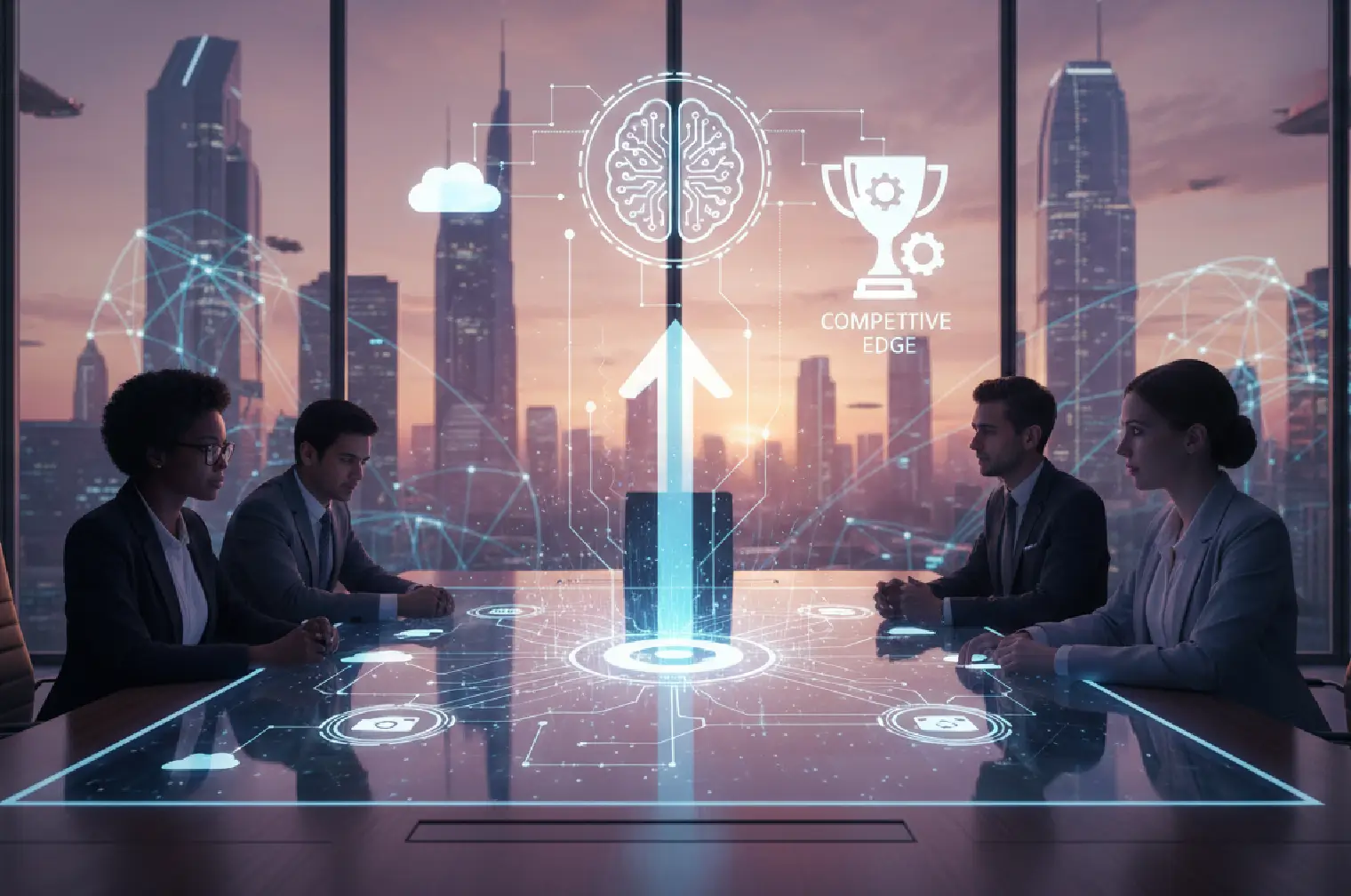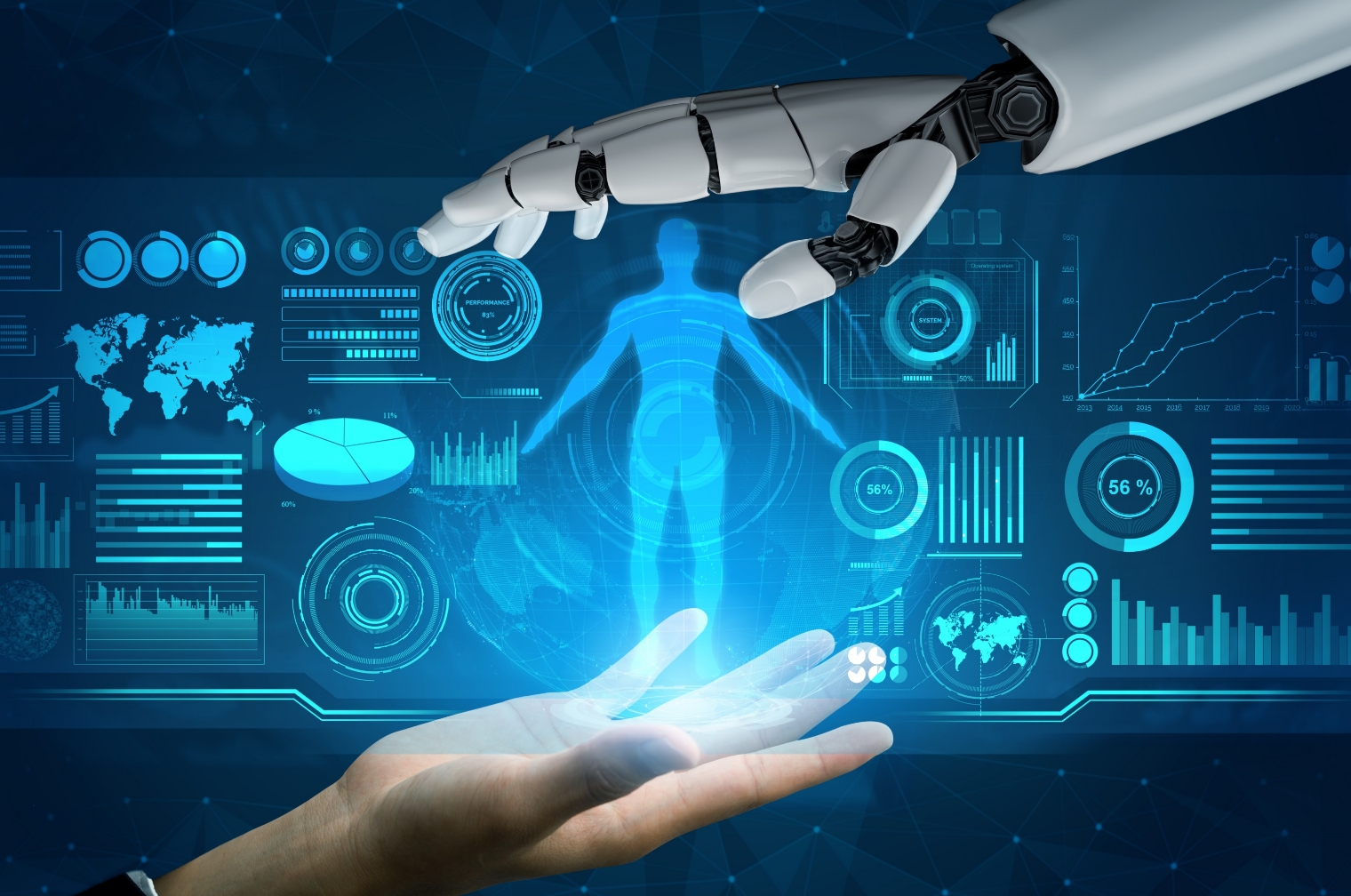Machine Learning and AI for revolution of Tech Companies are changing and streamlining businesses.
In 2025, AI in SaaS products is the new competitive edge. AI budgets and SaaS adoption are converging as enterprises standardize on platforms that compound value across teams, products, and data. Analysts indicate worldwide AI spending will near $1.5 trillion in 2025, while SaaS spend is set to hit roughly $300 billion, reflecting the move to cloud-native, intelligent services. The strategic question for CTOs is clear: why prioritize AI-powered SaaS as the next growth engine over incremental IT modernization?
Let’s discuss the shift from traditional upgrades to platform-driven innovation and how embedding AI into SaaS architectures builds a durable advantage, and how ViitorCloud partners with leadership teams to deliver it.
What’s Driving the Shift Toward AI-Infused SaaS?
AI in SaaS helps to deliver scalable intelligence: models learn from operational data, automation improves continuously, and product velocity compounds over time. CTOs are moving beyond isolated AI pilots toward platform architectures that industrialize AI, reduce TCO, and drive measurable business outcomes.
The convergence of cloud elasticity, ubiquitous data pipelines, and production-grade AI is now central to product strategy. McKinsey reports 65% of organizations use generative AI as of early 2024, underscoring normalized adoption across functions. Gartner projects global AI spending will approach $1.5 trillion in 2025, signaling sustained investment in AI infrastructure, applications, and services powering SaaS in AI roadmaps.
The push accelerates because legacy systems strain under rapid demand shifts, multi-tenant scale, and real-time decision needs. Leaders cite agility gaps, underutilized data, and extended release cycles as constraints that AI-driven SaaS platforms are built to overcome.
Build Your Competitive Edge with AI in SaaS
Enhance product capabilities and deliver smarter user experiences with ViitorCloud’s AI-driven SaaS innovation.
How Is AI + SaaS Redefining Digital Transformation for CTOs?
- Continuous learning and automation: Artificial intelligence models embedded in SaaS workflows improve with each interaction, compressing manual effort and elevating quality.
- Lower total cost of ownership: Cloud-native architectures, multi-tenancy, and MLOps/LLMOps reduce operational overhead while improving reliability.
- Faster go-to-market cycles: Modular services, reusable model components, and CI/CD for data and models accelerate iteration.
- Data-driven decision ecosystems: Unified data layers, vector search, and governed feature stores convert operational exhaust into compounding intelligence.
This matters now because technology and markets are volatile, and platforms that learn faster win sooner. Three-quarters of leaders expect generative AI in SaaS to drive significant or disruptive change in their industries, making platform choice a strategic bet, not a tooling decision.
Legacy vs AI-Driven SaaS Platforms
| Dimension | Legacy systems | AI-driven SaaS platforms |
| Adaptability | Static releases | Continuous learning and feature velocity |
| TCO | High infra/ops burden | Cloud-native efficiency and shared services |
| Data use | Siloed analytics | Real-time, governed decisioning |
| Personalization | Rules-based | Predictive, context-aware |
| Resilience | Monolith and downtime risk | Distributed, multi-tenant, automated rollback |
Accelerate Growth by Integrating AI in SaaS
Empower your platform with predictive intelligence, automation, and data-led decision systems.
What ViitorCloud Can Do
ViitorCloud helps leadership teams turn strategy into software with AI-first SaaS engineering, cloud-native modernization, and embedded intelligence in enterprise applications. The focus is to build platform foundations—data pipelines, feature stores, model registries, and inference gateways—then layer domain-specific AI to deliver business outcomes.
Expect tangible impact: faster product iteration with CI/CD for data and models, elastic scalability under variable loads, and 30–40% efficiency improvements through automation, right-sizing, and platform consolidation.
Teams also see quality gains from AI/ML-driven QA, anomaly detection, and AIOps. ViitorCloud brings the architectural rigor, domain-aware modeling, and production-grade MLOps to move from prototype to dependable, scalable product.
How ViitorCloud Helps CTOs Accelerate AI + SaaS Transformation
- Expertise in AI-first SaaS development and Generative AI integrations across discovery, retrieval-augmented generation, and agentic workflows.
- Proven success across BFSI, Healthcare, Manufacturing, and Public Sector, aligning AI outcomes to compliance, SLAs, and risk controls.
- Strategic partnerships with leading cloud and AI ecosystems to accelerate build, security, and observability with best-in-class components.
- End-to-end delivery from strategy and architecture to data engineering, MLOps, platform build, and ongoing optimization tied to KPIs.
ViitorCloud partners at the strategy layer to co-own outcomes, embeds with engineering to manage delivery risk, and establishes productized platform capabilities to scale innovation. As a strategic technology partner, ViitorCloud helps CTOs operationalize digital transformation with AI in SaaS as the operating model. Contact us at [email protected] and discuss with experts how our expertise can empower you.
Upgrade Your SaaS Product with AI Integration
Stay ahead of market demands by embedding intelligent automation and adaptive workflows.
Frequently Asked Questions
By merging scalability and intelligence, SaaS and AI enable rapid innovation, agile business models, and data-driven operations.
Integration complexity, data governance, security, talent readiness, and aligning AI outcomes with measurable business value.
65% of organizations now use generative AI, and global AI spending is projected to reach $1.5 trillion in 2025.
Through custom SaaS platforms, AI-powered data engineering, cloud-native modernization, and production-grade MLOps.
Platform-first moves compound; organizations expecting significant disruption from AI are already building AI-native capabilities into core systems.









